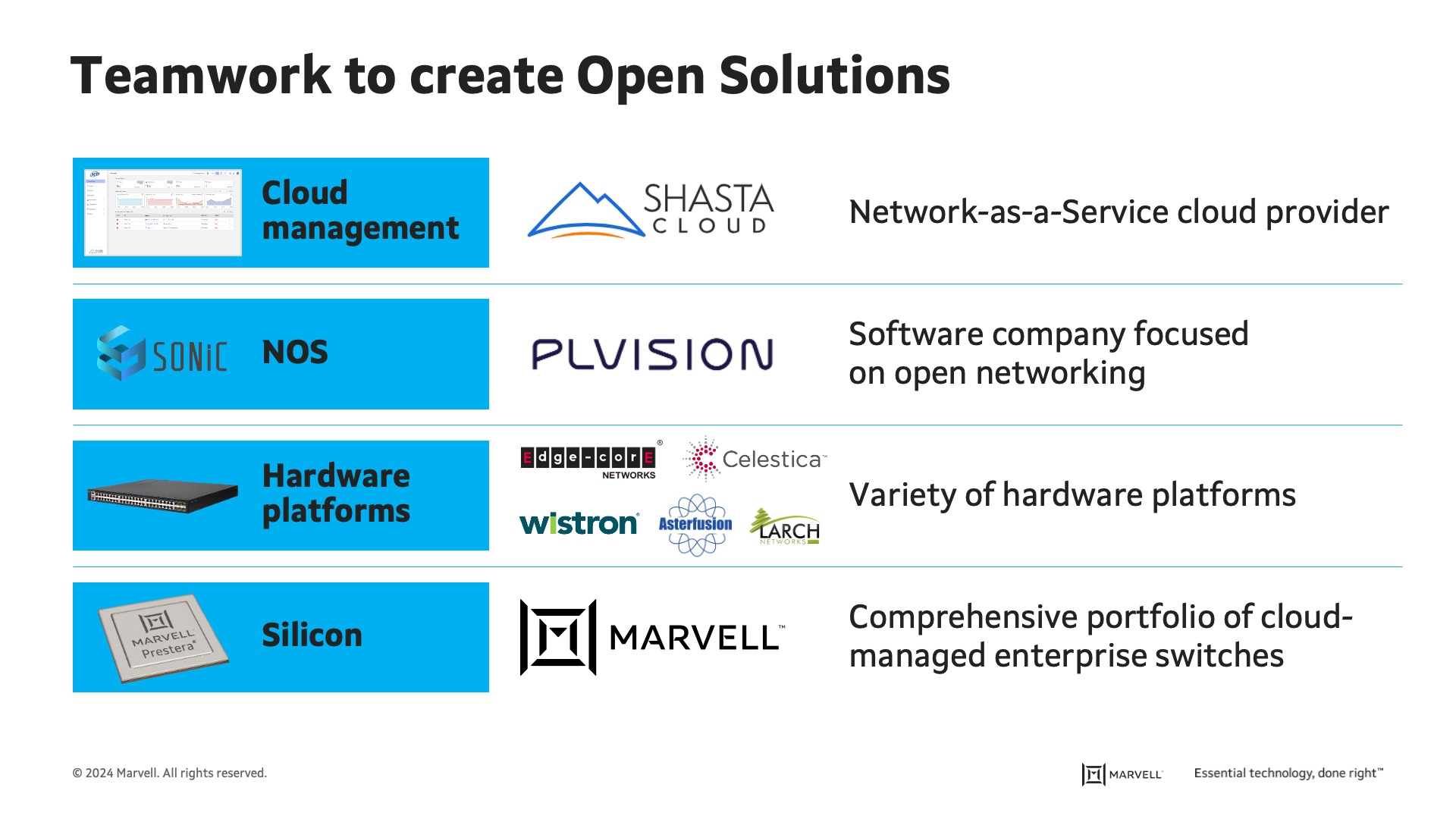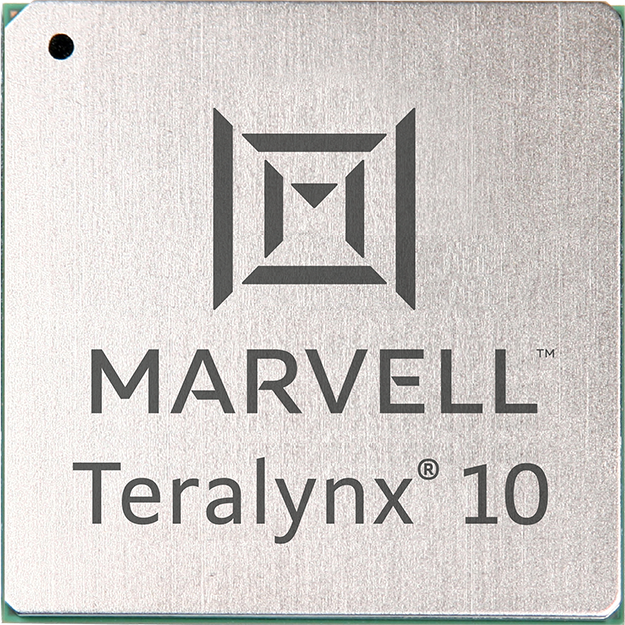

Open Networking is not a new concept. SONiC (the Software for Open Networking) has been around for some time, and cloud-managed campus switches based on proprietary NOS (Network Operating System), are also not new. What’s truly novel is the comprehensive solution that finally brings open-source SONiC to the campus networks and adds to it a layer of cloud management and zero trust provisioning, all running on a cost-optimized hardware platform specifically tailored to campus networks: “Cloud Managed Enterprise” or CME.
In recent years, Open Networking offered the hyperscale operators the option to use open-source software on a variety of merchant silicon, providing freedom from the lockdown imposed by the big system vendors. The next challenge was to bring similar benefits to campus networks, particularly to what is now referred to as CME.
This blog will demonstrate how the Marvell ® Prestera® switches, equipped with a comprehensive Software Development Kit, along with the collaborative efforts of a vibrant industry community called OpenLAN Switching (OLS), have created this open cloud-managed solution for campus networks.
The power of a community
The first thing to recognize is that it took teamwork from multiple companies to create this open solution. Under the umbrella of the Telecom Infra Project (TIP), various companies gathered and created a working group called OpenLAN. Within OpenLAN, two sub working groups formed: OpenWi-Fi and OpenLAN Switching (OLS), which is the subgroup relevant to this discussion.
Numerous companies actively participated in the collaborative effort—Figure 1 mentions just some of them—organized according to their role in the solution.

Figure 1: Breakdown of companies involved in OpenLAN Switching
By Amit Sanyal, Senior Director, Product Marketing, Marvell
If you’re one of the 100+ million monthly users of ChatGPT—or have dabbled with Google’s Bard or Microsoft’s Bing AI—you’re proof that AI has entered the mainstream consumer market.
And what’s entered the consumer mass-market will inevitably make its way to the enterprise, an even larger market for AI. There are hundreds of generative AI startups racing to make it so. And those responsible for making these AI tools accessible—cloud data center operators—are investing heavily to keep up with current and anticipated demand.
Of course, it’s not just the latest AI language models driving the coming infrastructure upgrade cycle. Operators will pay equal attention to improving general purpose cloud infrastructure too, as well as take steps to further automate and simplify operations.
To help operators meet their scaling and efficiency objectives, today Marvell introduces Teralynx® 10, a 51.2 Tbps programmable 5nm monolithic switch chip designed to address the operator bandwidth explosion while meeting stringent power- and cost-per-bit requirements. It’s intended for leaf and spine applications in next-generation data center networks, as well as AI/ML and high-performance computing (HPC) fabrics.
A single Teralynx 10 replaces twelve of the 12.8 Tbps generation, the last to see widespread deployment. The resulting savings are impressive: 80% power reduction for equivalent capacity.
By Wolfgang Sauter, Customer Solutions Architect - Packaging, Marvel
The continued evolution of 5G wireless infrastructure and high-performance networking is driving the semiconductor industry to unprecedented technological innovations, signaling the end of traditional scaling on Single-Chip Module (SCM) packaging. With the move to 5nm process technology and beyond, 50T Switches, 112G SerDes and other silicon design thresholds, it seems that we may have finally met the end of the road for Moore’s Law.1 The remarkable and stringent requirements coming down the pipe for next-generation wireless, compute and networking products have all created the need for more innovative approaches. So what comes next to keep up with these challenges? Novel partitioning concepts and integration at the package level are becoming game-changing strategies to address the many challenges facing these application spaces.
During the past two years, leaders in the industry have started to embrace these new approaches to modular design, partitioning and package integration. In this paper, we will look at what is driving the main application spaces and how packaging plays into next-generation system architectures, especially as it relates to networking and cloud data center chip design.
Copyright © 2025 Marvell, All rights reserved.
